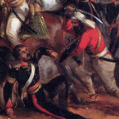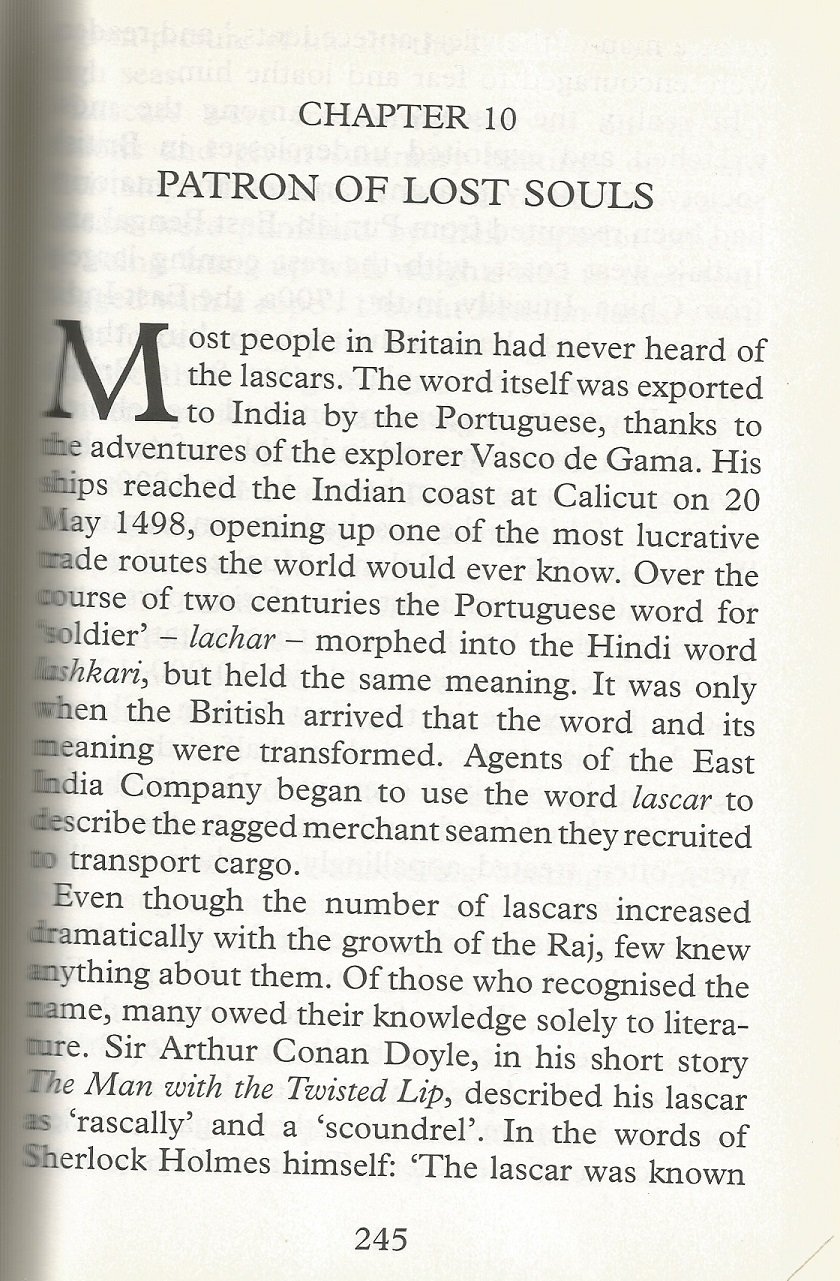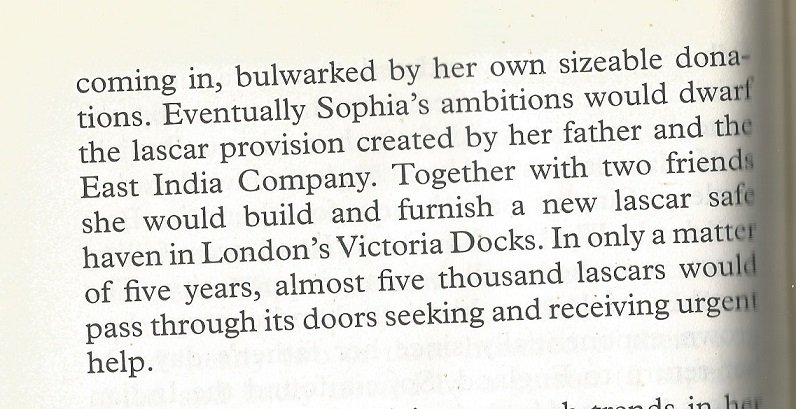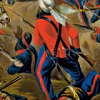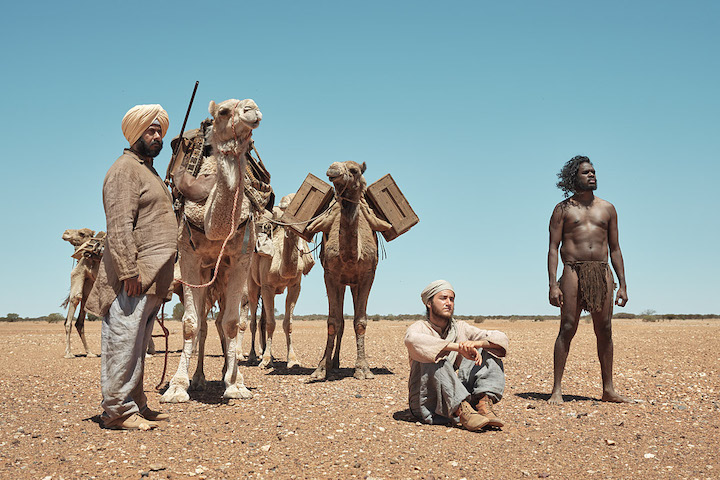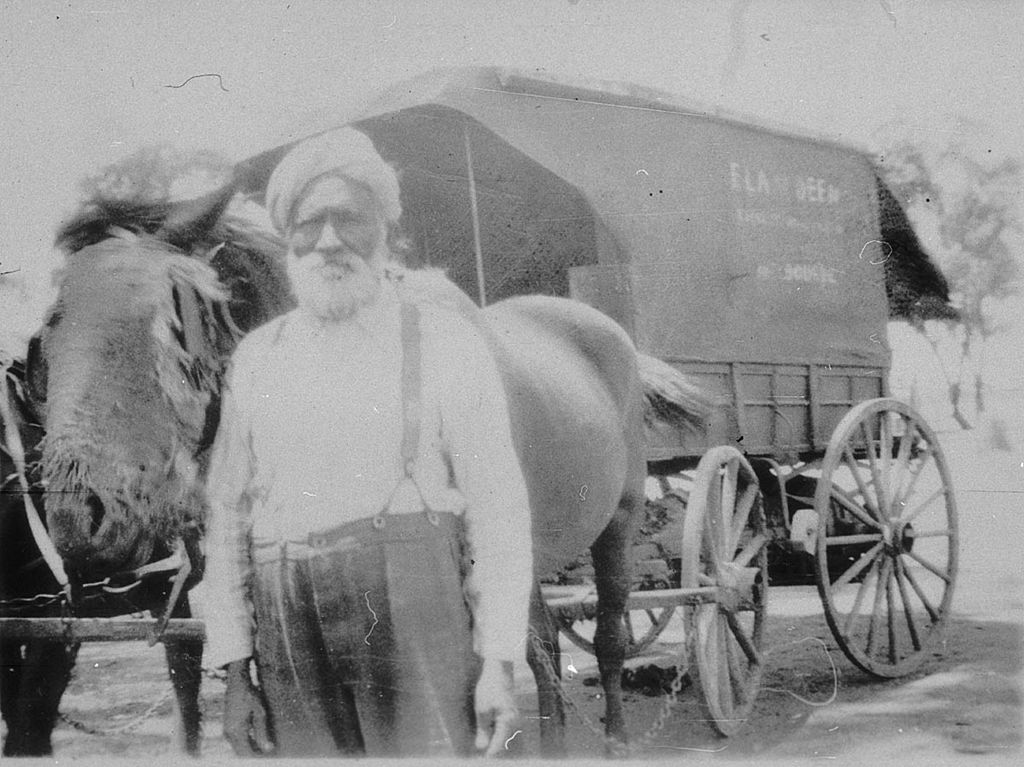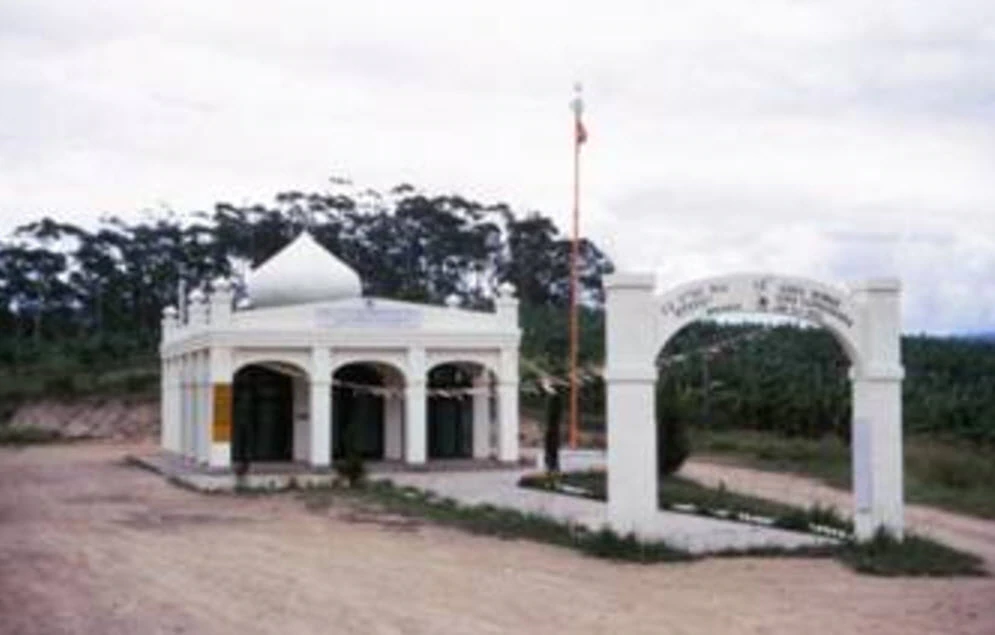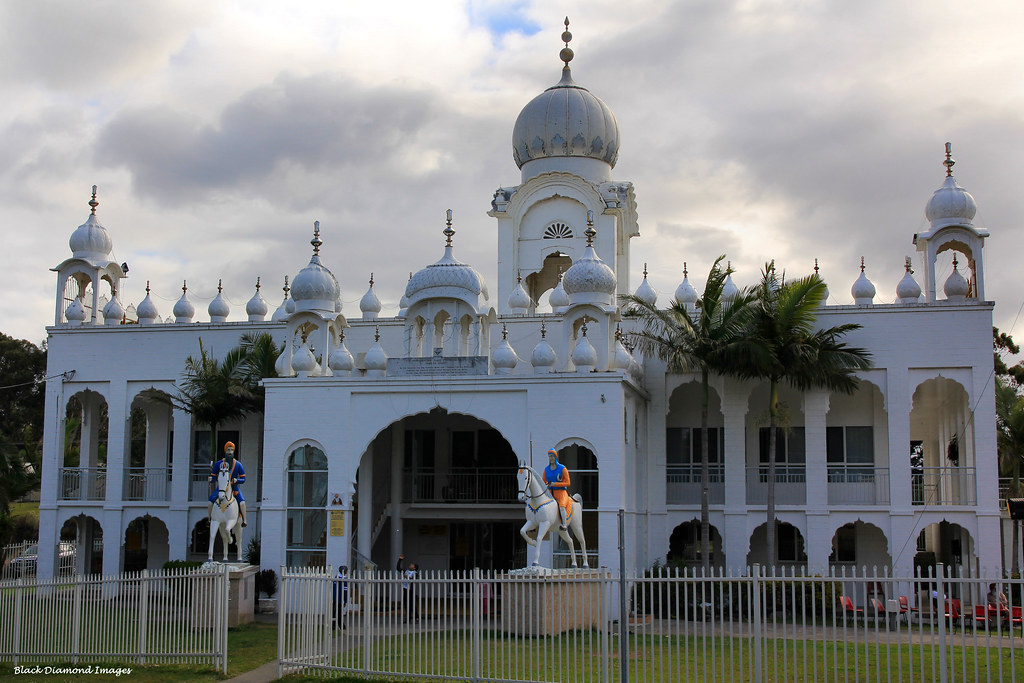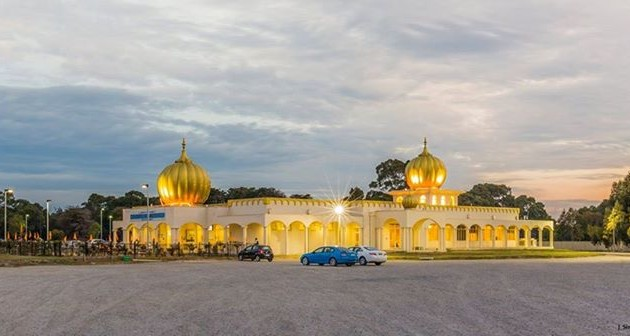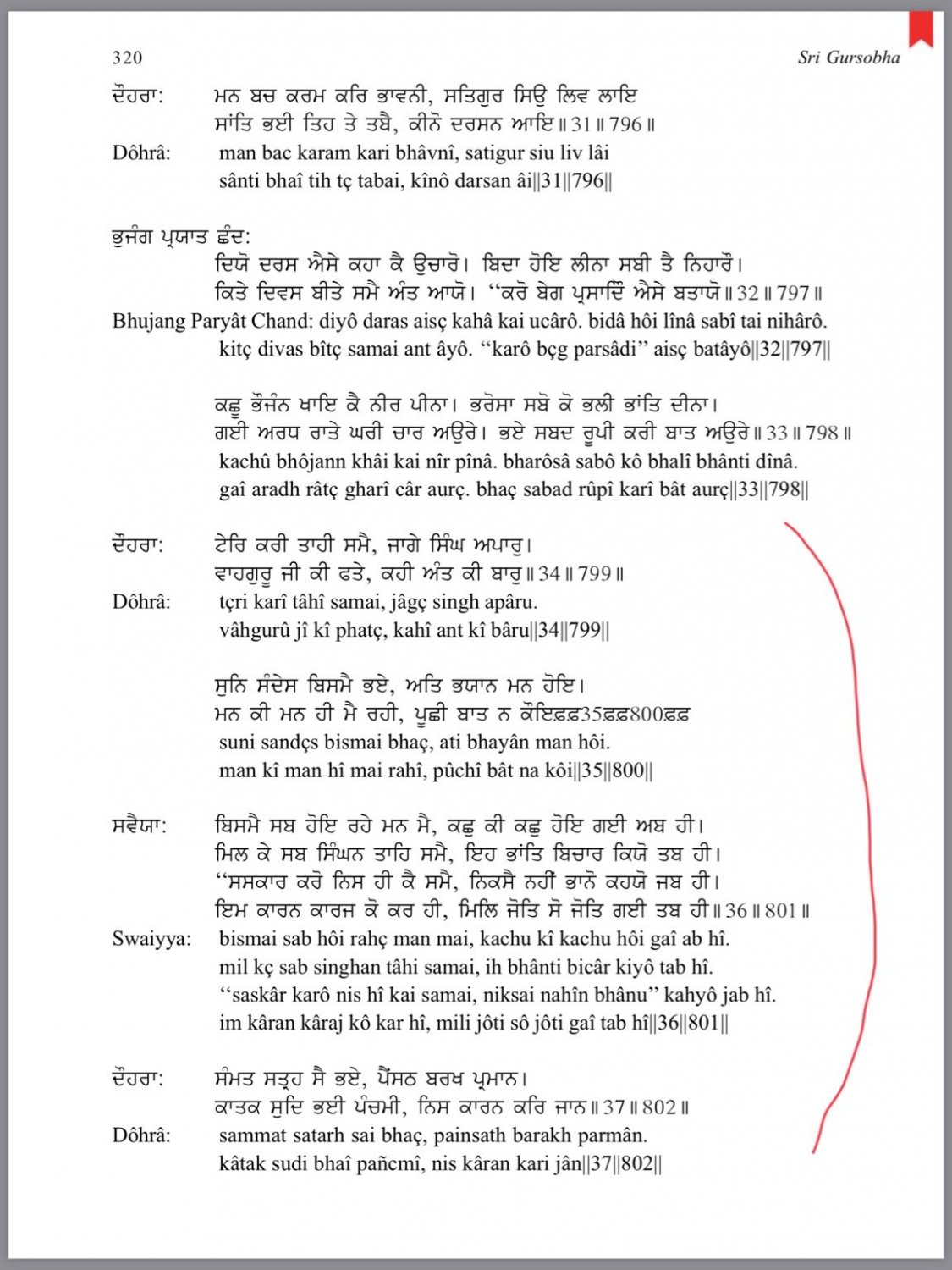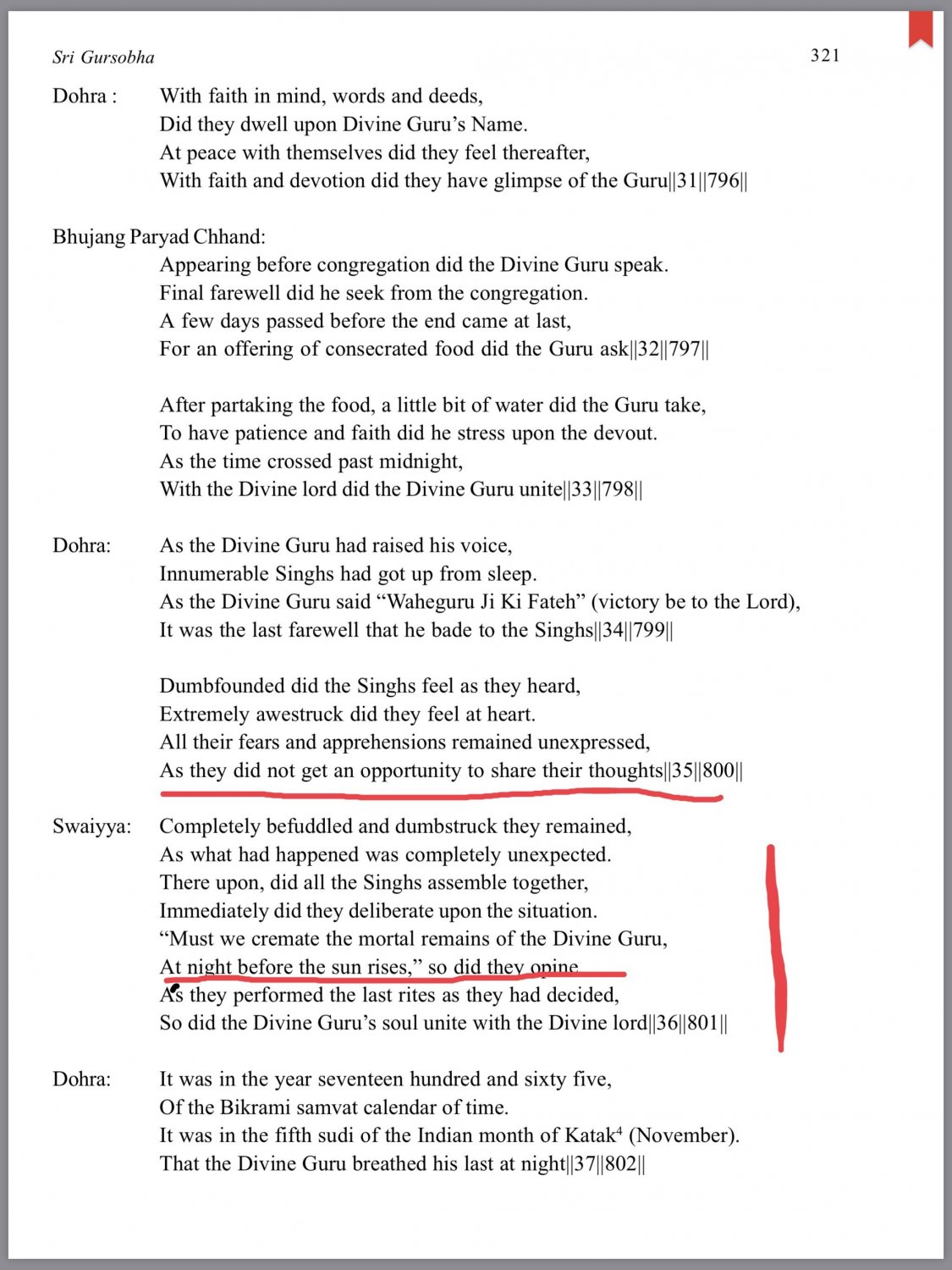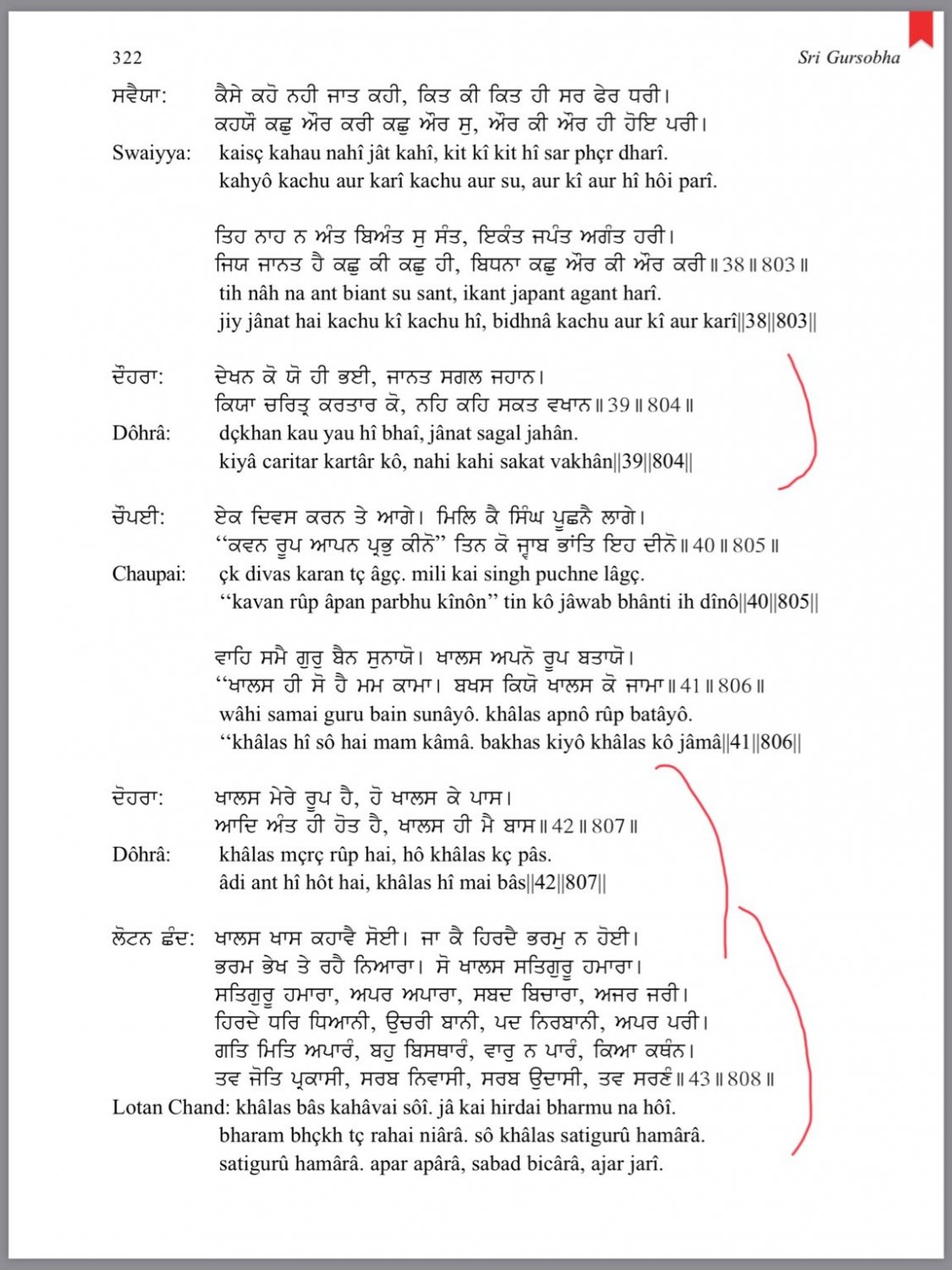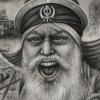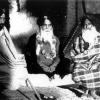Search the Community
Showing results for tags 'history'.
-
What were the causes that :- 1. Guru Angad Dev Died at the age 47. 2. Guru Ram Das ji Died at the age 46. 3. Guru Hargobind Ji at age 48. 4. Guru Har Rai ji Died at age 31. 5. Guru Harkrishan Ji Died at age 7. ( Most children survive chicken pox, Could there possibly a Conspiracy here and against all the gurus ) ?
-
Anyone know where I can find historical chronicles on puraatan sikhs? Anything that the British or any other outsiders have written on puraatan sikhs, would be nice to read.
-
ਵਾਹਿਗੁਰੂਜੀਕਾਖਾਲਸਾਵਾਹਿਗੁਰੂਜੀਕੀਫ਼ਤਹਿ a bit of a background on me: i grew up without any sangat in a remote town and would long for santa di sangat. i am now married and moved to a town where there is a lot of sikh sangat and daily programs at the gurdwara. sant baba joginder singh ji budha dal wale is coming to our town this week and i have the chaa (excitement) to take some offerings for them like back in the day when sants or guru sahibs used to visit remote towns and sangat would bring stuff, i'm also really happy that great mahapursh are coming and really want to take them something. I am wondering what can i take in this day and age that is appropriate ? Just something small.. I can't think of anything that baba ji do not have.. not even sure if they will accept it, but if not, i am hoping guru sahib will accept it nevertheless. please let me know if anyone has any idea! forgive me for my mistakes ਵਾਹਿਗੁਰੂਜੀਕਾਖਾਲਸਾਵਾਹਿਗੁਰੂਜੀਕੀਫ਼ਤਹਿ
-
Been reading Anita Anand's book on Sophia, who was Maharajah Ranjit Singh's granddaughter. Here's an interesting excerpt regarding the treatment of lascars, who were essentially hired sailors, many of whom came from Panjab. It's interesting to note how M. Duleep Singh, who is commonly characterised as some hedonistic fool in white literature, tried to help these very ill-treated people (before the anglo establishment attacked him), and how his daughter subsequently did so much for these people too:
- 9 replies
-
2
-
- lascars
- british imperialism
-
(and 2 more)
Tagged with:
-
The making of Sikh history – literally. I’d like to humbly submit the text below for my brothers and sisters consideration. I hope you enjoy reading it, and receive as much food for thought from it as I did during the translation. Especial thanks to Kam1825 for taking the time to create and share an ebook of the original work from which the translation is derived (Kavi Sainapati Rachit Sri Gur Sobha edited by Dr. Ganda Singh and published through the Publication Bureau of Punjab University of Patiala, 1st edition 1967, 4th edition 1996). Strangely, a few days after I had finished the main bulk of the translation, my own copy of the book miraculously (and unexpectedly) turned up after being missing for over four years! I’ll take that as a good sign. Anyone interested in perusing the original Panjabi text can find it here (between pages 8 and 13 in the PDF reader). Any feedback on improving the translation from knowledgeable parties is not only welcomed, but actively sought. The posts that follow this one reproduces the translation offered below, but includes my own scattered thoughts on the contents (identifiable as the blue italicised text). WJKK WJKF
- 18 replies
-
1
-
- Ganda Singh
- history
-
(and 3 more)
Tagged with:
-
Waheguru ji, this might be my first question on here, but I always feel weird skipping 85% of Anand Sahib during rehraas. Is it okay to include those 34 pauris when I do rehraas? (I have done this a few times before). I am aware that several sampardayi include more and more dasam bani, but chhota anand sahib is something every dal and sampardayi agrees on (as far as this agianee is aware of) so I am not sure whether it is okay for me to bring this up or do on a personal basis either.
-
vaheguru ji ka khalsa vaheguru ji ki fateh sangat ji, With great effort, we have finished writing an account of the daily life and lifestyle of Humble Sevaks at the Guru's Dharamshalas 500-300 years ago. Many people assume that it must have been like how their grandparents lived in rural Punjab, or like it is at a Nihang Dera, but this is not the case. It was different to contemporary Punjabi/North Indian culture. Everything was completely different: the way of life, the Soch, sanskar and material culture. People lived communally and self-sufficiently. Everything had a sacred function. The food and medicine was different. The ceremonies and rites were different. Even the whole geography was different- thick jungles with tigers and elephants. Today these Dharamshalas, jungles and wildlife sadly no longer exist and most of the puratan lifestyle has gone. As some of you may agree, Dharamshala life during the Guru's period, was an Akaal Jeevan- and is how we are meant to be living today also, so it is of double importance for us to know and understand our true history. SEVA REQUEST: To make the words come alive so that people can relate, we are looking for a spiritually minded artist to make a few colour paintings of what is described. It is only 5-7 pages but has several potential scenes that could be depicted. There are no sakhis at this time- it is a plain description of how things were, how people thought, lived, interacted, behaved, dressed, ate, prayed etc. It would be helpful if the artist is familiar with pre-industrial Indigenous culture. The Guru Matas nurtured Dharamshalay so it would be fitting for an Amritdhari bibi to take up this seva, but anyone is welcome to apply. The entire project is non-profit and not linked to any Jatha. It will be freely published online for all, with due credit to the artists if they want it. Please send me a private message for more details. Bhai Preetam Singh Canada
-
wjkk wjkf Can someone please provide me information regarding raj dev lut, a demon who had darshan of Satguru Sri Guru Nanak Dev G Maharaaj? thanks wjkk wjkf
-
Sikhi is one of the fastest growing religions with 125,000 (2016) adherents in Australia, having grown from 12,000 in 1996, 17,000 in 2001 and 26,500 in 2006. Punjabi is the 13th most common language in Australia. 81% of Punjabi speakers are Sikhs, 13.3% are Hindus and 1.4% are Muslims. (Circa 1908. Panjabi Sikh immigrants at Adelaide port, Australia) 1830s–1901 Sikh men have a longer history in Australia as the women arrived much later. The earliest Sikhs arrived in Australia from Panjab province in the late 1830s. There was a demand for manual labour due to slowing convict transportation. Since many Sikhs came from agrarian backgrounds, they worked on farms or as shepherds. In the 1860’s, cameleers (called the Ghans) were brought to Australia to explore & settle the vast arid lands. A minority of the Ghans were made up of Sikhs. They set up camel-breeding stations and rest house outposts (caravanserai) throughout inland Australia. (from a film on Ghans with an Aboriginal-Australian man) Entrepreneurial migrants Towards the end of the 19th century, Indian Hawkers (many were Sikh) were brought due to Australia’s widespread population. Young men first travelled on foot and later purchased horses and carts. Hawkers required licenses which mostly became restricted to British subjects in the 1890s thus denying Afghans, Assyrians and Chinese from renewing their license, giving Sikhs a monopoly on hawking. This was held till the 1930s until European migrants began to take over the trade. (Sikh hawker in Victoria) White Australia policy From federation in 1901 until the 1973 immigration of non-whites, including Sikhs, into Australia was restricted due to the enactment of the White Australia policy. It also made it impossible for Sikhs who already lived in the country from returning to Panjab as they would be barred re-entry. To counter the threat of Japan’s expansion and the need for soldiers, Indian Australians were given rights greater than that of other Asians. Through a series of steps between 1925 and 1929, Indians in Australia were allowed limited property rights, were given the right to vote and allowed a pension. Early pioneers in the 1930s began to bring their sons of working age to Australia. Due to shortage of white population due to war, Sikhs were allowed work in agricultural sectors. One of the well-known sectors was the Banana industry in Woolgoolga, later forming a Sikh community which continues to exist today. 1950s and 60s Sikhs started working hard to purchase their own banana farms. With steady income, they brought their wives. In 1961, there were 6 Sikh women in Woolgoolga, creating Sikh households and Sikh children born in Australia. In 1968 the First Australian Gurdwara was established in Woolgoolga. (Australia's first Gurdwara in 1968) Post White Australia policy - 1973- present Sikh migration increased dramatically after the Racial Discrimination Act. Many Sikhs also came from Malaysia, Singapore, Fiji, Kenya, Uganda and the UK to settle in Australia. New immigrants are mainly based around major cities . Melbourne is now home to the largest Sikh population. Since 2000, there has been a great increase in the number of Sikh students settling in Australia. 39% Sikhs live in Greater Melbourne, 21% in Greater Sydney and 10% in Greater Brisbane. Some Gurdwaras
-
Randomly stumbled across this account today. Similar to the Suraj Podcast, this brother is basically making a series for Panth Parkash. Definitely check it out.
- 1 reply
-
5
-
- panth parkash
- history
-
(and 1 more)
Tagged with:
-
I want to start a thread about 84 and the movement afterwards so anyone can come here and learn about it more.There isn't enough about it in one place so hopefully with guru sahib's grace this thread will serve to become a useful resource to learn about 84 .It's up to us the sangat to contribute and keep this thread going. It is all our responsibility to honour our shaheeds and to remember them and to keep their legacy ever new and alive to inspire our future generations. No one else can be blamed if our new generations aren't aware of their own heritage. It is all our fault for never teaching them and giving them resources to learn about it themselves. To kick it off here is a speech of jaswant singh khalra I came across a few days ago. You can feel in his speech that genuine pain in his heart, from having seen with his own eyes the genocide of our own people. Here is a channel I came across setup as a tribute to 84 for maybe more rare video footage I'd guess not everyone on here has seen. https://www.youtube.com/channel/UCCmZvPBEoVmtvLrv07TNYtw/videos also here is an interview of shaheed bhai amrik singh's son bhai tarlochan singh ji, This is the playlist from basics of sikhi about 84. To access the playlist click on the top right corner of the video and you can watch any from that playlist. This playlist contains history and testimonies of people who had been there and shares their experiences.
-
What are the best books about Sikh History you have read?
-
It takes placed during the 16th century, between the well known first guru, and the last. A muslim boy, finds Guru, mysterious and wise, amongst Hindu and Muslim rule, and it is an epic tale. But I was wondering historically, between 1550-1600 were there any significant issues in Sikh history, that I would want to talk about?
-
This thread can be used to share gurpurabs, important dates, etc. from our ithihaas
-
hi anyone know of any really old sikh buildings, from Gurus' times is possible? can you post a image? i just like historical artefacts and would really like to see a building dating back to those times.
-
I have full faith in Sri Guru Granth Sahib Ji as a Guru because Guru Gobind Singh Ji gave “Gaddi” to Sri Guru Granth Sahib Ji. But, this belief is based upon the “Saakhi’s” stories, I heard from preachers and modern historians. They say Guru ji gave gaddi at Nanded (Hazur Sahib) in 1708. The point is where is ir written? In which authentic contemporary or old histoey books? Today by chance I came across the Punjabi and English Translation of “Gur Sobha” book by Senapati, a contemporary poet & historian in the court of Guru Gobind Singh Ji which suggests otherwise. I suggest everybody to read this book in Punjabi and English with translation which ever is convenient to you. Please read these pages particularly because they are eye opener. Especially Page no. 320, 21,22, 23. Here is the link for you to read and download book https://www.sikhinstitute.org/sri_gursobha.pdf On these pages it is very clear that Guru Ji did not give “Gaddi” to anyone; either to Sri Guru Granth Sahib Ji or Khalsa panth. I think we all should strive hard to know the truth about succession story from old history books like Gur Partap Suraj, Gur Bilas etc. and not believe in concocted stories by our preachers and so called modern historians.
- 13 replies
-
... while actual Islamic teachings and scriptures (The Sunnah, the Quran and the Hadiths) make no attempt to conceal the frankly questionable feats, bachans, and moments of his life? Rampant sexual degeneracy, idolatry, hypocritical religious edicts and conduct, and unexplainably savage and bloodthirsty barbarism across the board. Yet, Sikh sants, gianis, and parcharaks speak so effusively and warmly of "Mohammed Sahib" and his various companions and successors. These Sikh personalities can barely conceal their admiration for the Islamic prophet and his achievements. What's going on?
-
I've always wondered what the first edition covered that caused so much upset in the colonialist establishment of the time? “ONE OF THE MOST VALUABLE BOOKS EVER PUBLISHED IN CONNECTION WITH INDIAN HISTORY”: RARE FIRST EDITION OF CUNNINGHAM’S HISTORY OF THE SIKHS, 1849, HANDSOMELY BOUND (INDIA) CUNNINGHAM, Joseph Davey. A History of the Sikhs, from the Origin of the Nation to the Battles of the Sutlej. London: John Murray, 1849. Octavo, modern full brown calf, raised bands, burgundy morocco spine label.$4800. First edition, with map of Punjabi political divisions until 1803 outlined in color, color folding map of Punjabi political divisions after the treaty of 1846, and folding genealogical table of the Gooroos, handsomely bound. Cunningham joined the Bengal Engineers in 1831 and arrived in India in 1834. “In 1837 he was selected by Lord Auckland to join Colonel Claud Wade, who was then the political agent upon the Sikh frontier, as assistant, with the special duty of fortifying Firozpur, the agent’s headquarters. This appointment brought him into close connection with the Sikhs, and, as he spent the next eight years of his life in political employments in this part of India, he was able to obtain that thorough knowledge of their manners and customs which makes his History of the Sikhs one of the most valuable books ever published in connection with Indian history. In 1838 he was present at the interview between Lord Auckland and Runjeet Singh, the great Sikh chieftain; in 1839 he accompanied Colonel Wade when he forced the Khyber Pass, and he was promoted first lieutenant on 20 May in that year; in 1840 he was placed in charge of Ludhiana, under G. Russell Clerk, Colonel Wade’s successor, and as political officer accompanied Brigadier-general Shelton and his army through the Sikh territory to Peshawur on his way to Cabul, and then accompanied Colonel Wheeler and Dost Muhammad, the deposed ameer of Afghanistan, back to British territory; in 1841 he was sent on a special mission to the principality of Jammu; in 1842 he was present at the interview between Lord Ellenborough and Dost Muhammad and the Sikhs… He spent four years on [the History], and on its publication in 1849 it was received with the greatest favor by the English press, a verdict which posterity has ratified, for it is universally recognized as the one authority upon the subject. But though this history made his name as an historian, it brought him into deep disgrace with his superiors. In his last chapter he treated of the history of the first Sikh war, and in it he made use of the knowledge he had obtained while acting as political agent with the army in the field, and distinctly asserted that two of the Sikh generals, Lal Singh and Tej Singh, were bought. Both Lord Hardinge and Colonel Henry Lawrence, who had acted as political agent after the death of Major Broadfoot, asserted that there had been no private negotiations with any of the Sikh leaders; but the confidential position which Cunningham had held, and still more his disgrace which followed, are strong arguments that such negotiations did pass” (DNB). As a result of the controversy, Cunningham was stripped of his authority and ordered to go on regular regimental duty. He lost most of his income in the process and any possibility of political advancement. Indeed, the publication of The History of the Sikhs marked the end of his career. He was known primarily for revealing confidential documents and his great accomplishments were little recognized, The History of the Sikhs having been largely suppressed. Cunningham died unexpectedly in 1851. Indeed, the second edition—featuring Cunningham’s own corrections and additions—was not published until 1853, too late for Cunningham’s reputation to matter. Folding map expertly linen-backed, interior generally quite nice, binding fine. A lovely copy in fine condition. https://www.baumanrarebooks.com/rare-books/cunningham-joseph-davey/history-of-the-sikhs/89967.aspx
- 1 reply
-
- colonialism
- annexation
-
(and 1 more)
Tagged with:
-
I remember hearing in a katha once that sant isher Singh ji was from a royal family? Maybe I'm confused? Anyone know anything about sant ji? Anyone have any inspirational saakhis?
-
This looks interesting. Marina Wheeler is Boris Johnson's first wife who has four kids with him. Her mother was from a Sikh background by the looks of it. According to this DM article, she looks like she wants to discover her 'lost heritage'. This is pertinent to me because recently I've been spending time with younger mixed race relatives, and some of the older ones now seem to resent being encouraged to be indifferent to the Sikh side of their heritage when growing up. Ms Wheeler was able to speak to her mother, Dip Singh, about her experiences in India, before she died of bowel cancer in February. When her mother was 14, they were forced to flee their side of the Punjab after it ended up on the side of Pakistan. Her family left their comfortable life and moved to Delhi, though Ms Wheeler says she has no recollection of ever meeting her grandfather. She told GMB: 'I was brought up very British - I don't know any Indian languages - and my mother made this conscious decision not to teach us any. 'It was this complete blank canvas, this whole side of my heritage, and I wanted to discover that. Speaking to Radio 4 about her mother, Ms Wheeler said: 'On one level it is simply that she came from a generation who didn't talk about their lives. https://www.dailymail.co.uk/news/article-8941359/Boris-Johnsons-ex-wife-Marina-Wheeler-says-couple-years-traumatic.html#comments
-
https://www.hindustantimes.com/world-news/rare-books-on-sikhism-punjab-emerge-in-london-sale/story-It445bHhVoPN2bUC7Qi2dM.html June 24 2020 A London-based rare books dealer on Wednesday launched a collection of rare books, original manuscripts and artwork on India that includes several first editions of work on Sikhs, Sikhism and Punjab dating from early eighteenth century. The 40-item collection from dealer Peter Harrington includes the first translation of the Adi Granth into English and several travel narratives set in the kingdom of Ranjit Singh, and military handbooks dedicated to Sikh customs – hailed in them as ‘the bravest and steadiest of soldiers’. Others offering glimpses of life in India under British rule include a book by Captain Lakshmi, who was appointed by Subhash Chandra Bose as commander of the Rani of Jhansi Regiment in the Indian national Army, and three elusive monographs on the ruling families of Punjab, written or inspired by Lepel H. Griffin, a colourful official in nineteenth century British India. Glen Mitchell, senior book specialist at Europe’s largest anquarian book dealer, said: “We have seen an increased interest in the last 20 years from collectors of works from the Indian sub-continent, and the demand for 19th and early 20th century British accounts of this fascinating period in colonial history continues to attract a core group of collectors based both in the region and diaspora in the UK and beyond.” Topics that remain enduringly collectable include those focused on military exploits, colonial exploration, seminal religious texts, ethnographical, geographical, botanical and zoological accounts, and of course administrative, historical and political works,” he added. Highlights of the collection include an eyewitness account of Ranjit Singh’s kingdom written by Shahamat Ali, the expedition leader’s Indian-born munshi and inscribed by him to the earl of Shaftesbury; The Life of Robert Lord Clive, Baron Plassey by Charles Caraccioli – the first biography of Clive, considered something of a character assassination by his enemies within the East India Company; and I.N.A. Defence. Subject People’s Right to Fight for Freedom – two contemporary publications of the address delivered by J. Bhulabhai Desai in defence of members of the INA on trial for treason. Pom Harrington, owner of Peter Harrington, said: “While we have curated selections on Asia in the past, this is our first dedicated catalogue on works from India”. The wealth of rich illustrations, lithographs, maps and coloured plates really lent themselves to creating an interactive and immersive digital-only catalogue that allows our clients to scroll through details and additional images of these fine works. Source Hindustan times

